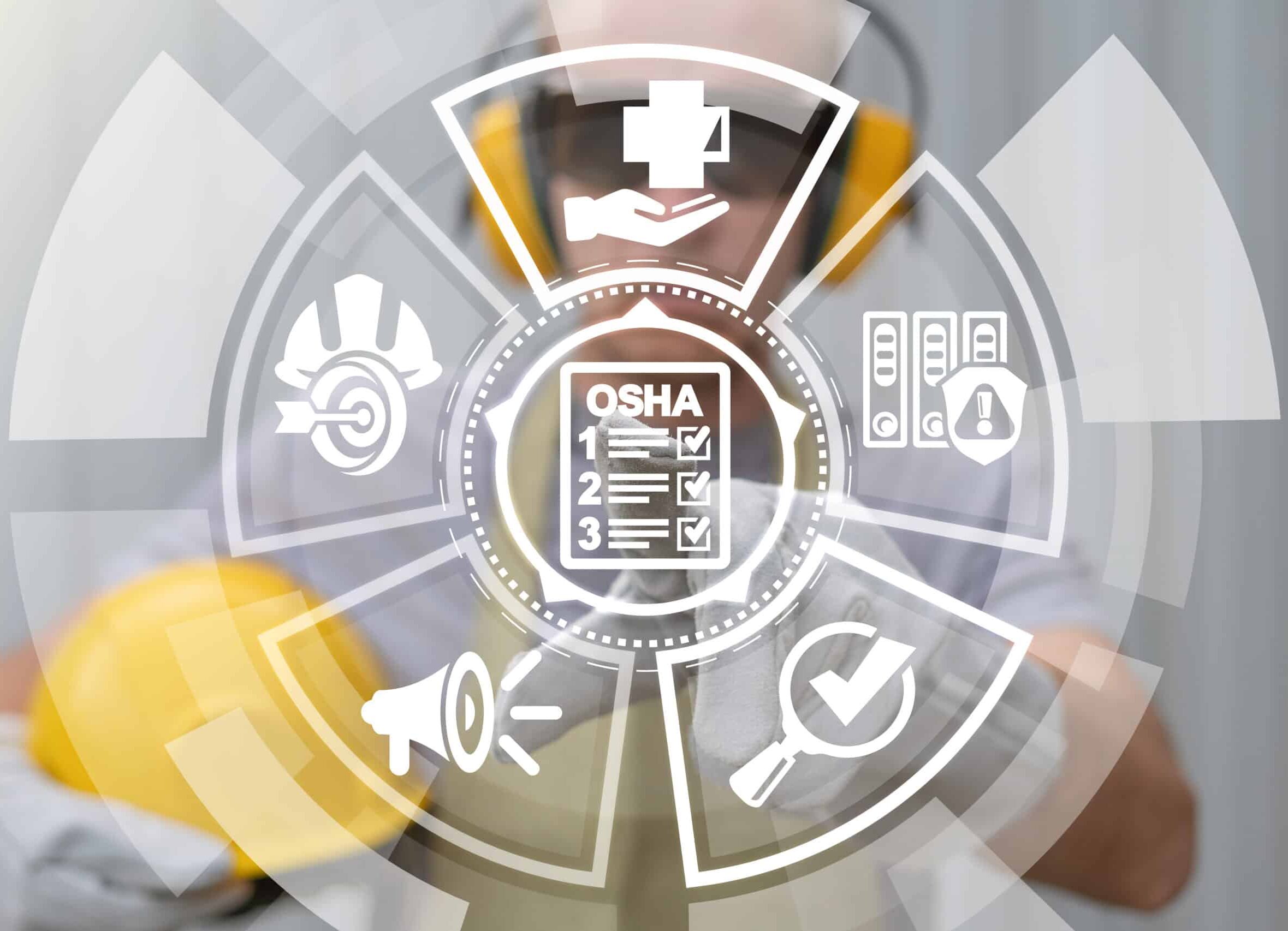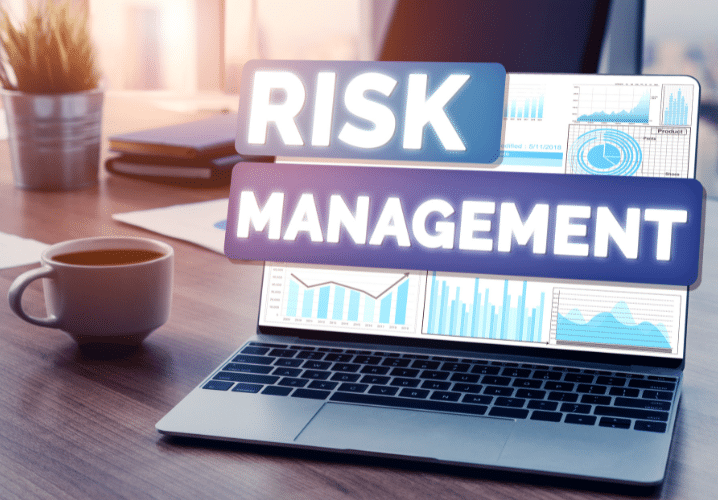July 12, 2024 6 min read

Crystalline Silica Training for the Construction Industry
Industry:
Solution:

Employees in the construction industry face various workplace hazards, including crystalline silica. This well-known lung carcinogen poses multiple health and safety risks to employees. In this blog, we’ll break down the top areas where employees are vulnerable to crystalline silica, as well as OSHA training requirements and resources to implement crystalline silica training into your own organization.
What is Crystalline Silica?
Crystalline silica is a common component of building materials such as soil, sand, granite, and concrete. Employees in construction may inhale crystalline silica while performing activities such as:
- Abrasive blasting with sand
- Sawing brick or concrete
- Sanding or drilling into concrete walls
- Grinding mortar
- Manufacturing brick, concrete, stone, or ceramic products
- Cutting or crushing stone
Risks of Crystalline Silica
The Occupational Safety and Health Administration (OSHA) estimates that approximately two million U.S. workers are exposed to crystalline silica in over 600,000 workplaces.
In the workplace, silica particles that are at least 100 times smaller than ordinary sand can enter the lungs of employees. Some negative effects of crystalline silica include:
- Formation of scar tissue or silicosis. Silicosis is an incurable respiratory disease that can be disabling or even fatal.
- Increased risk of lung cancer. Data shows that lung cancer risks increase steadily with more cumulative silica exposure.
- Kidney disease. One study reported that individuals who were exposed to silica had 1.8% excess risk of death from kidney disease.
- Chronic obstructive pulmonary disease (COPD). COPD includes emphysema and chronic bronchitis, and its main symptom is shortness of breath due to difficulty breathing air into the lungs.

What is the OSHA Standard for Crystalline Silica?
In 2016, the Occupational Safety and Health Administration (OSHA) published the final rule “Occupational Exposure to Respirable Crystalline Silica.” This marked the first updated silica regulation since 1971.
Two separate standards make up this final rule: one for general industry and maritime, and another for the construction industry. In this section, we’ll focus on the construction-specific standard.
OSHA’s final rule requires construction companies to:
- Follow a new permissible exposure limit (PEL) of respirable crystalline silica. The OSHA silica exposure limit is now 50 micrograms of silica per cubic meter of air averaged over an 8-hour workday.
- Monitor the health of exposed employees. Employers must assess employee exposures to silica if they’re at or above an action level of 25 micrograms of silica per cubic meter of air over an 8-hour workday.
- Limit access to high exposure areas. Identify common areas and activities associated with risk via online training.
- Provide workers with respiratory protection. This should be done when controls cannot adequately limit exposures to the action level.
- Provide employees with safety training. Employers must educate workers on the types of activities that result in silica exposure, and the ways in which it can be limited.
The Importance of Crystalline Silica Training
Due to the various health risks that accompany exposure to crystalline silica, providing your workforce with proper training is essential.
But what kind of training should employees receive?
OSHA’s training requirements under the new rule are performance-based. This means that during an OSHA inspection, employees should be able to demonstrate knowledge and understanding of the following topics:
- Health hazards associated with exposure to crystalline silica
- Workplace tasks that can result in an exposure
- Steps their employer has taken to protect employees from exposure, including controls, work practices, and the use of respiratory equipment
- Sections of the rule that are immediately pertinent to either the maritime and genera industry, or to the construction industry
- The purpose of the medical surveillance program
Workers in the construction industry must also be able to identify the competent person designated by their employer to implement their organization’s written control plan.
OSHA expects that a full hour of training will be needed for all covered workers, on average. While the final rule does not require employers to maintain records of employee training, organizations may still decide to implement systems to track training in order to confirm that all workers have been properly trained.
Crystalline Silica Training with Vector Solutions
At Vector Solutions, we offer numerous award-winning online health and safety courses that cover everything construction workers need to know about the risks of silica dust exposure.
This course explores the risk of inhaling crystalline silica, and the proper protective measures workers should take. Featured courses include:
- Crystalline Silica Awareness: This course explores the risk of inhaling crystalline silica, and the proper protective measures workers should take.
- Crystalline Silica – Construction Worksite Safety: In this course, we review the risks of inhaling silica dust, the prevalence of this health risk in construction In this course, we review the risks of inhaling silica dust, the prevalence of this health risk in construction, and how to stay safe.
With our effective training, your employees will learn how to:
- List activities that create an exposure to silica dust
- Recall harmful health effects caused by exposure to silica dust
- List the different routes of exposure to crystalline silica
- List control methods for reducing or eliminating silica dust exposure
Architecture, Engineering and Construction Training Course Catalog
Vector Solutions’ industry-leading online course library includes engaging courses developed to meet continuing education requirements and enhance critical skills.
View Catalog
Additional Ways to Combat Silica Exposure
In addition to online training, exposure to crystalline silica can be controlled through:
- Engineering controls. Examples include using an effective local exhaust or vacuum tool system, wet-cutting and/or isolating the source of dust.
- Administrative controls. For instance, limiting the amount of exposure time and working with materials in a way that reduces the generation of airborne dust.
- Personal protective equipment (PPE). Researching and identifying the right type of PPE for your company will better protect your workforce against crystalline silica health risks.
How Vector Solutions Supports the Construction Industry
Adhering to OSHA requirements for crystalline silica is not only a legal obligation, but also a moral imperative and a sound business decision. Implementing a robust safety program ensures that your organization is meeting regulatory compliances, safeguarding the lives of workers, reducing the likelihood of workplace accidents, and minimizing the associated financial and reputational costs.
A solid construction safety program benefits various stakeholders:
- Employees: Ensures a safer work environment, reducing the risk of injuries and supporting well-being.
- Managers and Supervisors: Provides guidance on implementing safety protocols and maintaining compliance.
- Companies: Enhances reputation, attracts top talent, reduces insurance costs, and boosts productivity.
- Customers: Instills confidence in your firm’s commitment to safety and quality, improving customer relationships.
Developing a safety program and plan is a proactive approach to safety. It’s not just about properly responding to safety incidents: it’s a way to prevent injuries and fatalities on construction sites.
To maintain safety and improve OSHA compliance, check out our online construction training and safety solutions. Request a demo to learn more.








